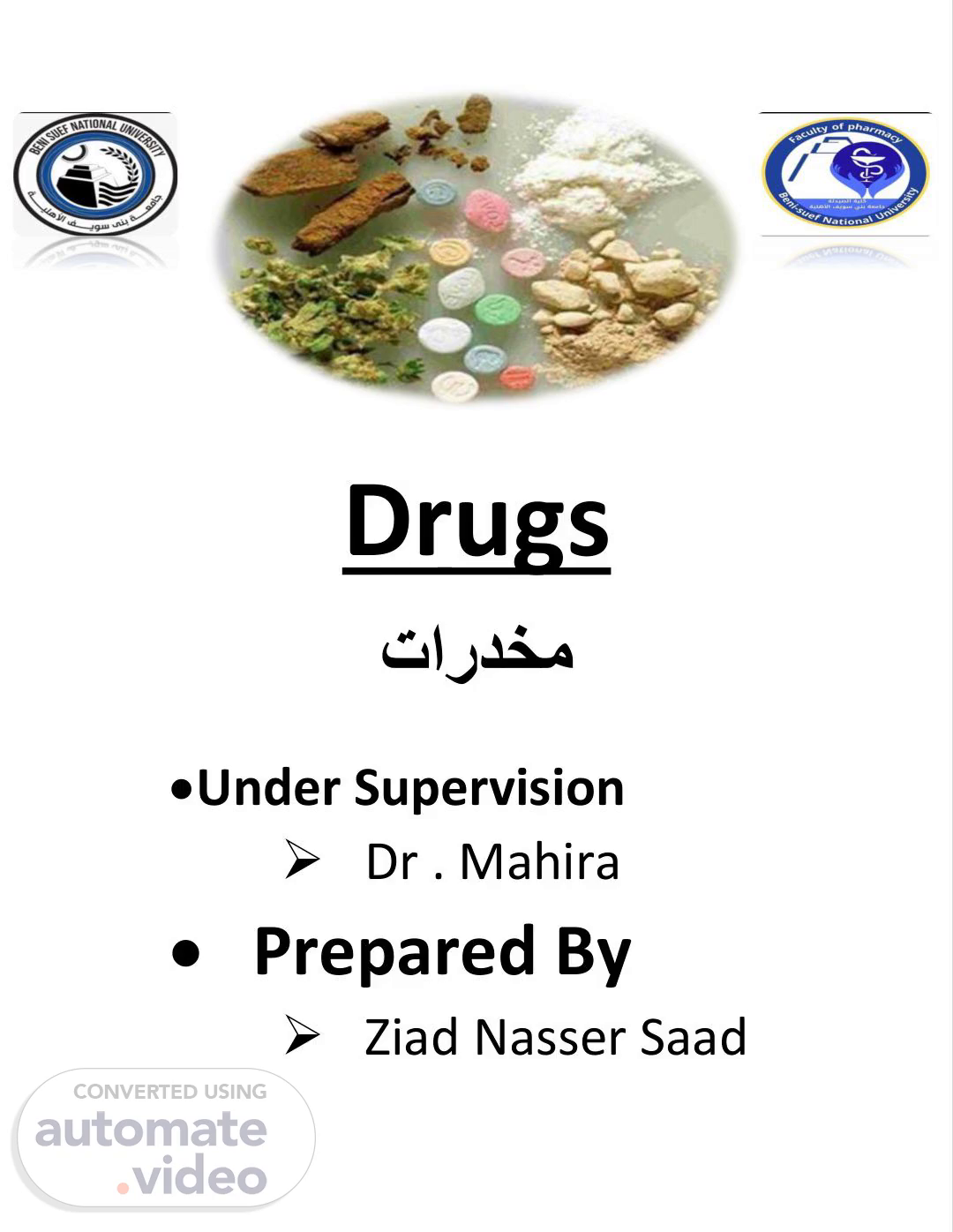Scene 1 (0s)
Drugs تاردخم Under Supervision Dr . Mahira Prepared By Ziad Nasser Saad.
Scene 2 (7s)
1. Introduction Drugs are substances that affect the mind or body when consumed. They can alter mood, perception, or behavior and are often misused for recreational purposes. Drug abuse has become a serious global issue, affecting millions of individuals, families, and communities. This paper explores the types, causes, effects, and solutions related to drug abuse..
Scene 3 (26s)
2. Types of Drugs 1. Drugs can be categorized as legal or illegal. Legal drugs include alcohol, nicotine, and certain prescription medications. Illegal drugs include marijuana (in some countries), cocaine, heroin, ecstasy, and LSD. 2. They are also classified based on their effects: 3. Stimulants (e.g., cocaine, meth): increase alertness and energy. 4. Depressants (e.g., alcohol, sedatives): slow brain function. 5. Hallucinogens (e.g., LSD): cause altered perception and thoughts. 6. Opioids (e.g., heroin, morphine): relieve pain and can cause euphoria..
Scene 4 (56s)
3. Causes of Drug abuse 1. Psychological Factors 1. Depression 2. Anxiety 3. Trauma or past abuse 4. Low self-esteem 2. Social and Environmental Influences 1. Peer pressure 2. Family problems or neglect 3. Lack of supervision or guidance 4. Easy access to drugs 3. Curiosity and Experimentation 1. Especially common among teenagers and young adults 2. Desire to try something new or exciting.
Scene 5 (1m 18s)
4. Effects of Drug Abuse 1.The consequences of drug abuse are severe and widespread: 2.Physical effects: damage to the heart, liver, brain, and other organs. 3.Mental health issues: such as paranoia, depression, or psychosis. 4.Social problems: family breakdown, unemployment, criminal behavior..
Scene 6 (1m 36s)
5. Drug Addiction and Dependency 1. Drug addiction is a chronic disease that leads to compulsive drug seeking and use despite harmful consequences. It changes brain function and behavior, making recovery difficult without help. Symptoms of addiction include intense cravings, withdrawal symptoms, and loss of control over use..
Scene 7 (1m 53s)
6. Treatment and Rehabilitation 1. Treatment for drug addiction includes: Therapy: cognitive behavioral therapy (CBT), group counseling. Medication: to manage withdrawal symptoms or cravings. Rehabilitation centers: provide structured recovery environments. Recovery is possible but requires dedication, support, and time..
Scene 8 (2m 8s)
7. Prevention and Awareness 1. Prevention is the most effective way to combat drug abuse. This includes: 2. Education: teaching youth about the dangers of drugs. 3. Awareness campaigns: using media to spread information. 4. Community involvement: support from families, schools, and governments..
Scene 9 (2m 26s)
8. Conclusion o Drug abuse is a critical issue that impacts health, society, and the economy. With proper education, support, and treatment, individuals can overcome addiction. It is the responsibility of every member of society to help prevent and reduce the harmful effects of drugs..
